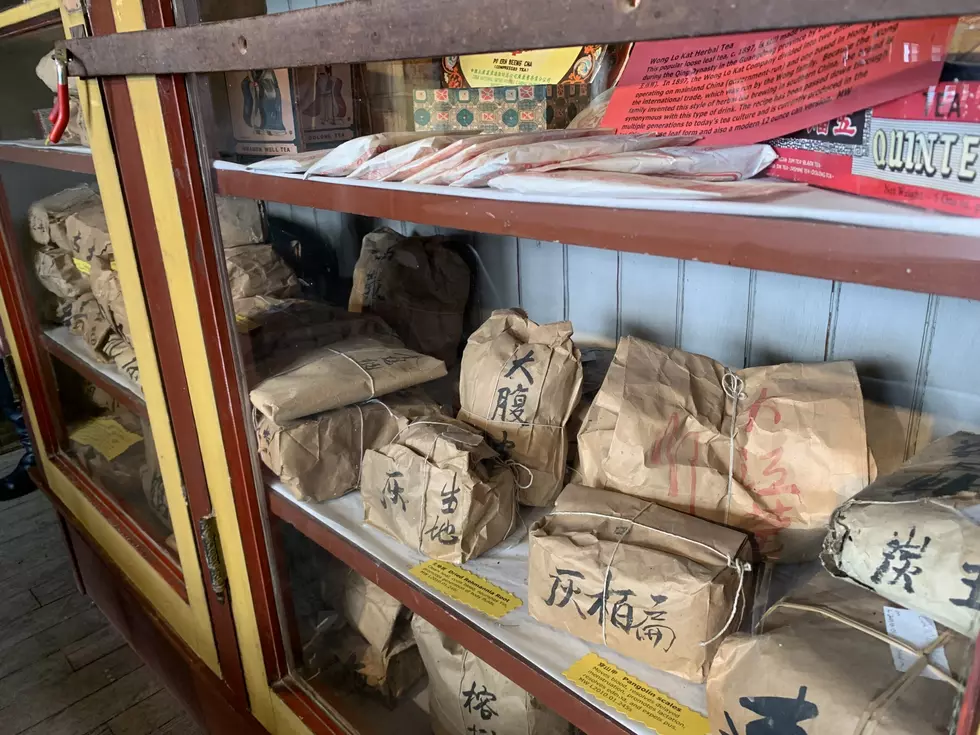
Mai Wah: Remembering the legacy of Chinese immigrants in Montana
The Mai Wah Noodles and Chop Suey sign atop the building on West Mercury Street are printed in big black-and-white letters, a visible and permanent reminder of what was once home to one of the largest Chinese communities in the intermountain West.
The building stands where the people are no longer, though.
The bulk of Butte’s once-thriving Chinese population, which by several accounts peg it at more than 1,000, disappeared from the Mining City around the time of World War II, if not before. Several families endured into the 1950s, but as mining declined, so too did people leave to find more plentiful, less dangerous work.
The Wah Chong Tai Mercantile, housed next to the Mai Wah, sits with merchandise still boxed, wrapped and ready for sale. Small signs translate the goods, which range from shark fin to tea. The store closed in 1942 suddenly, likely a victim of rationing, rising fear of foreigners and a switch to a war-time economy.
The cases of items include traditional Chinese medicines, including the king flower, centipede and shark fin.
The Mai Wah Society runs a museum that documents the rise of Chinese culture in the West as well as chronicles its demise. It tells of a thriving community that contributed to the mining workforce, and also ran one of the most popular restaurants in all of Butte with many Chinese dishes seeming as familiar today as they would have been 100 years ago. On the second floor of the Mai Wah sit the huge wood-fired stoves and giant woks that served hot noodles nearly around the clock.
Pat Munday, a Mai Wah Board member and past president of the Society, tells about when the Mai Wah noodle press churned out food not just for the Chinese community, but also for the restaurants in the Italian neighborhoods of Butte, which also needed noodles.
The museum stands as a reminder to a West that was far more diverse, driven by the need for cheap labor. The museum is across the street from the home of another one of Butte’s most iconic restaurants, Pork Chop John’s and its the pork chop sandwich, which is as close as anything to a state food besides a steak. And not too far away was a neighborhood where Finnish immigrants lived.
Ironically, the museum’s remote location and being left untouched for years have conspired to make it a cultural treasure house.
For example, the statue of Guan Yu is one of the oldest examples of the Chinese Buddhist god, even though it likely dates back to the 1880s. Yet in the wake of the cultural revolution in China and the eradication of religious artifacts, many of the statues and temples dedicated to him have been destroyed.
“People, especially tourists from China, weep to see Guan Yu,” Munday said.
Another exhibit showcases the different attempts, especially in the American West, to persecute Chinese immigrants, who were often criticized as being hostile toward assimilation.
However, Munday explained that whether it was through exclusion acts passed by Congress that explicitly barred many Chinese immigrants from jobs or naturalization, he said that many had come to America to work to send money home to support a war-torn, impoverished nation beset by a devastating opium drug trade.
Though places like Denver and Rock Springs, Wyoming, were known for bloody uprisings against Chinese immigrants, Butte often pushed back against such exclusionary measures, despite calls for boycotting Chinese businesses from different unions.
However, Butte’s Chinese population was also a part of the larger world affairs, and the Mai Wah Museum also chronicles that – including membership in the Chinese Empire Reform Association, which sought to overthrow the Dowager Empress Cixi.
The Mai Wah Society also preserves ways in which Butte’s Chinese assimilated into the city’s rich culture, despite the hostilities found in many Western towns. Chinese New Year was always celebrated, like many things in Butte, with a party and parade. Some laborers worked in the mines, while others worked as respected doctors, practicing both Western and Chinese medicine.
For example, famous Butte doctor Huie Pock was trained in both America and China. He had two clinics, one for white residents and one for Chinese.
In the red-brick building, more than 40 different vendors and merchants worked, selling wares, food and groceries to mostly Chinese customers, but others as well. Even today, hardly an inch of space is not used.
“While thousands of Chinese residents lived in Montana during the late-19th and early-20th centuries, few traces of their presence remain. The memory of this population, so crucial to the development of the region, is kept alive, preserved, and interpreted by the Mai Wah Society,” said board member Mark Johnson. “Through the efforts of the Mai Wah Society, visitors to Butte can discover the diversity of Montana at its founding and come to appreciate the contributions and experiences of Chinese Montanans.”
